
◆ text/Fujian Lin Yuqing
Failure phenomenon
A 2013 Mercedes-Benz domestic E200, driving 139 527km, the customer complaint instrument alarm. Fault diagnosis and remove after receiving the car, the author starts the car first, the engine jitters, and the engine trouble light in the instrument is always on; After confirming the fault phenomenon, understand the relevant maintenance history, the car is maintained normally, and there is no other maintenance. Use Mercedes-Benz Star Diagnostic diagnosis equipment (DAS) to quickly detect the vehicle, and the engine control unit (ME) stores the fault code (Figure 1).

The Chinese explanation of the fault code is: P030100 identifies that cylinder 1 is fired. The fault code is currently stored.
According to practical experience, it can be seen that most of these fault codes are formed by dirty oil circuit, resulting in uneven operation of the engine and bright indicator light. The mileage of this car is relatively high. According to the regular solution, clean the oil circuit, including removing carbon deposit, replacing fuel filter and spark plug, and then delete the fault code to extinguish the trouble light. A few minutes later, the fault code appears again and the engine jitter remains the same. Find the schematic diagram of engine running stability, as shown in figure 2.
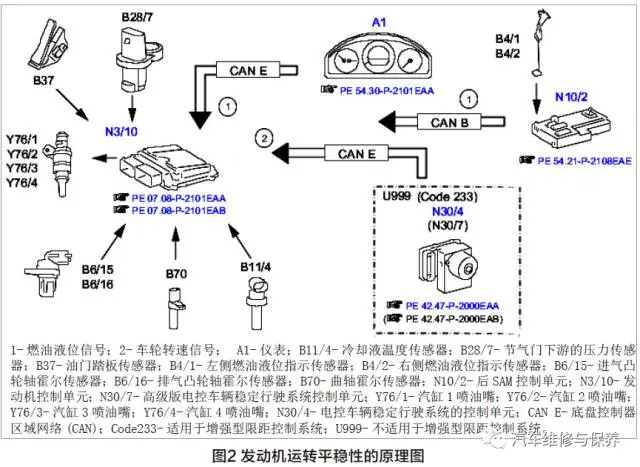
It can be seen from Figure 2 that after comprehensively evaluating the signals of each sensor, ME accurately controls fuel charge to ensure the smooth operation of the engine and control the combustible mixture within the range of & lambda;= 1.
In this way, the author analyzes the possible causes of failure in the following four situations:
(1) breakdown in fuel system, 1 cylinder nozzle failure.
(2) ignition system failure, such as 1 cylinder spark plug and ignition coil failure.
(3) relevant lines, such as the line failure from the fuel injector of cylinder 1 and ignition coil to ME.
(4)ME failure.
Looking for the circuit diagram of fuel injector and ignition coil (figure 3), it can be seen that both fuel injector and ignition coil are powered by 87 circuits, in which fuel injector is activated by ME through grounding signal; the ignition coil is activated by ME through a control line.
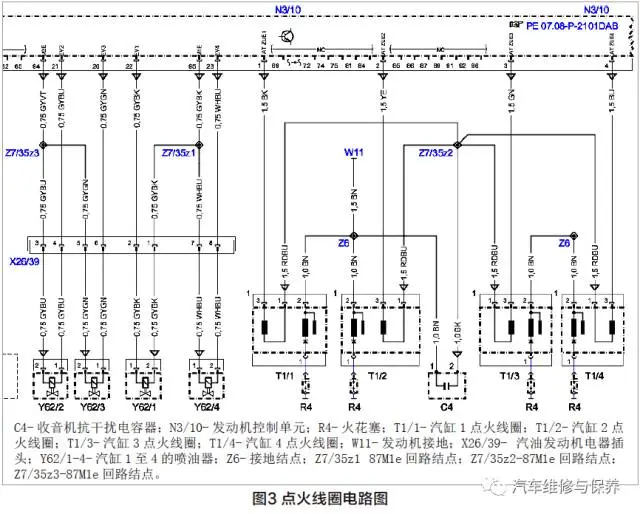
Based on the above situation, perform the following checks one by one:
(1) carry out the guide test of the fault code (Figure 4), and measure the power supply voltage of the ignition coil of cylinder 1 to 12V, which is normal.
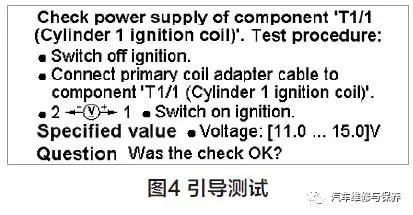
(2) Check the signal line from the fire coil and nozzle of cylinder 1 to ME. The conduction is good and the plug connection is firm.
(3) after adjusting the ignition coil, spark plug and nozzle with the normal vehicle, the fault remains the same.
(4) upgrade the ME Software (figure 5) and install the new software, but the failure is still the same. The fault point is locked on the ME hardware. Since ME is an anti-theft part, it cannot be adjusted separately. Therefore, it is not considered for the time being.
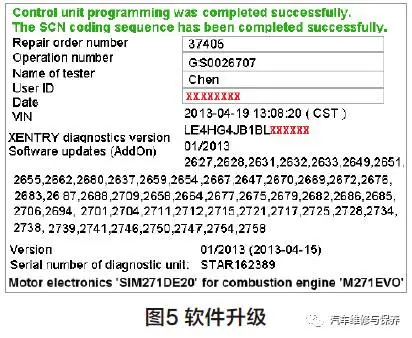
(5) re-sort the inspection idea. According to this fault feature, the inspection idea can be extended to the inside of the engine. Therefore, remove the spark plug again and connect the cylinder pressure gauge to measure the cylinder pressure (figure 6). As a result, the cylinder pressure of cylinder 1 is 0, the pressure of the other three cylinders is about 12Bar (1bar = 105 Pa), which is abnormal.
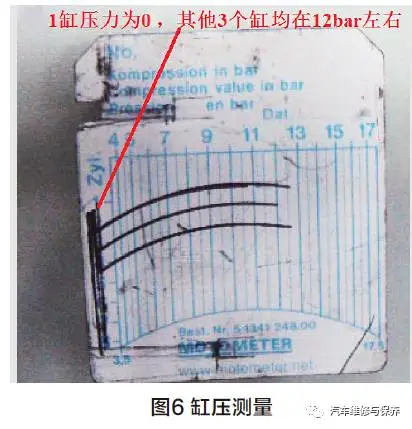
(6) remove the cylinder head and find that one exhaust valve of the first cylinder is missing an angle (Figure 7), and valve seat is also missing an angle (Figure 8).
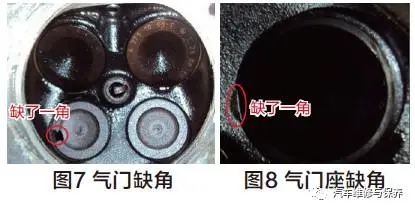
(7) check the cylinder wall and piston of the first cylinder. No abnormal wear is found on the cylinder wall (Figure 9), and the piston works well. Check the three-way catalyst (Figure 10) without blocking or falling off.
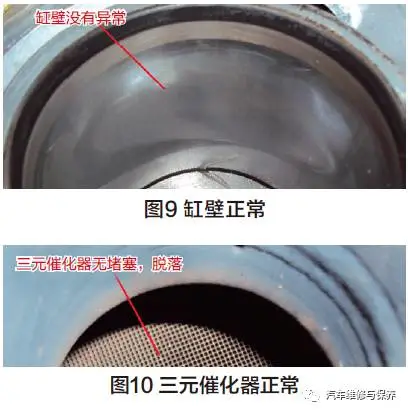
Solution: replace the cylinder cover and cylinder gasket, test run, and completely eliminate faults.

1. The fault code P0301 ~ P0310 means that 1~10 cylinders have misfire. The fault code P0300 means that multiple cylinders have misfire. When more than one cylinder has misfire, P0300 is stored at the same time. This is the OBD-II fault code. Any vehicle type manufactured by any automobile manufacturer will store the corresponding fault code if there is a misfire fault, but these fault codes are not defined in the early electronic control engine.
2. This "fire" is not what we said decades ago ". This "misfire" refers to bad combustion or no combustion caused by problems in spark plug ignition, combustible mixed steam and cylinder pressure, the engine computer determines that the downward speed of the piston is lower than that of other cylinders when a cylinder is working, so the cumulative number of times is reflected in the data stream. "Fire" is also called spark plug fire-off and fire-less, which is a term often used to repair carburetor engines two or ten years ago. It refers to spark plug not firing or spark energy shortage, rather than other aspects.
3. The car fault code is P0301,1 cylinder fire, the author carried out to remove the carbon deposit, replace the fuel filter, replace the spark plug, the fault phenomenon is still. The author measured the ignition coil and fuel injector line of cylinder 1, changed the ignition coil and fuel injector of cylinder 1, upgraded ME software, and the failure was still the same. The above are all aimed at the detection and treatment of spark plug ignition and combustible mixed steam, but the problem is not here. The author measured the cylinder pressure and found that 1 cylinder is 0, open the the cylinder cover and see a missing piece of exhaust valve and contact valve seat, indicating that the cause of "fire" lies in the cylinder pressure.
4. There are many specific reasons in every aspect of the three aspects. Simply speaking, the low cylinder pressure includes poor valve packing, poor sealing of piston rings, inaccurate installation of gas distribution timing, gas channeling of cylinder gasket, leakage of fuel injector O-ring, etc. The bad valve packing also includes the damage of Valve, valve pedestal ring, valve spring and hydraulic tappet, and the low oil pressure entering the hydraulic tappet cylinder.
5. Analyze the possible causes of damage to the valve and valve pedestal ring: ① the valve begins to have small ablation due to poor heat dissipation (excessive carbon deposit), and then working stroke of high temperature and high pressure gas continuously impacts the leaking part, causing vicious circle and aggravating ablation; ② the combustion time is prolonged due to excessive dilution of mixed steam (blockage of fuel injectors) or water inflow of cylinders (damage of cylinder pads), resulting in excessive heat reception by valves; ③ material problems of parts.